
Why the key does not turn in the ignition lock (larva repair)
Content
To ensure the secrecy of access to the car, the principles and methods of electronic coding are currently used. The owner has a key in the form of a certain digital combination, and the receiving device is able to read it, compare it with a sample, and then decide on admission to the main functions of the car.

From the point of view of the theory of electronics and computer science, everything is extremely simple, this is exactly how it should happen. But when the corresponding compact devices did not yet exist, then similar functions were performed mechanically - with the help of curly keys and larvae with a reciprocal encoding along the relief.
Such mechanisms have been preserved even now, although they are gradually being squeezed out of automotive technology.
The main malfunctions of the ignition lock cylinder
It was reliability and undemanding to the presence of supply voltage that became the reasons for such a long life of mechanical locks with larvae.
This is the last way to get into the car and start the engine when the electronics failed or the battery just died in the remote control. But trouble-free mechanics can fail.
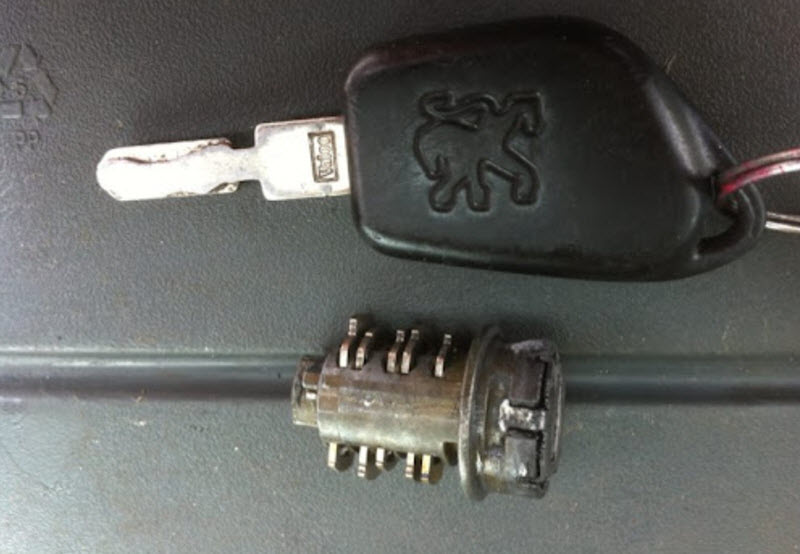
Key won't turn
The most common thing that almost all people have encountered is that the key is inserted into the lock, but it is impossible to turn it. Or it succeeds after repeated attempts with a great loss of time.
It does not have to be a car, all household locks, door locks, for example, refuse to function in the same way. This is due to the incorrect operation of the device that reads the key code, which is usually called a larva.
The larva has a cylinder with pins or frames of a certain length and shape, these are spring-loaded elements, which, when the key is fully inserted, are located all the way along the protrusions and depressions of its relief. This can be the face of the key plate or a flat surface.
In any case, if the encodings match, all the pins (frames, security pins) that interfere with the rotation with the key are recessed, and the key can be set to any position, for example, ignition or starter.
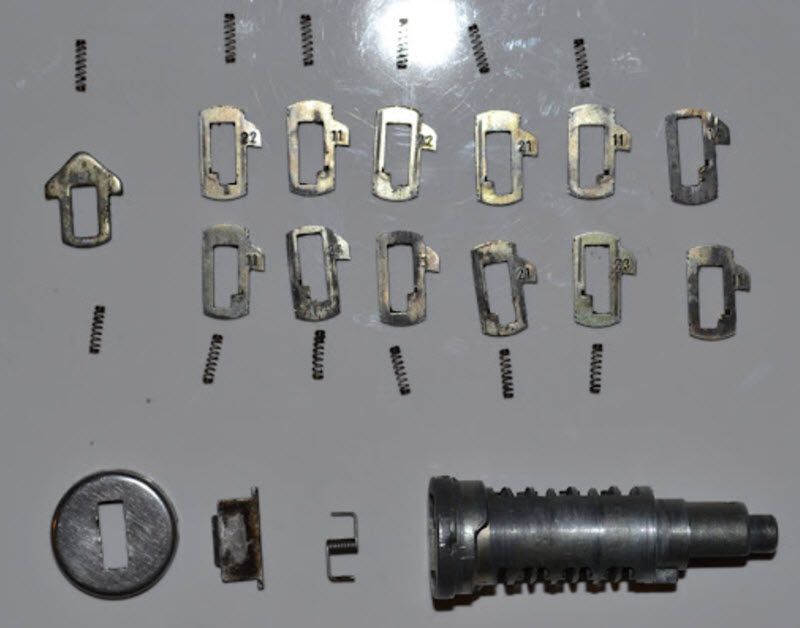
Over time, everything that happens to the castle inevitably leads to its failure. Fortunately, this only happens after a very long period of normal operation.
But several factors are at work:
- natural wear of the rubbing surfaces of the key and secret frames;
- weakening of the fit of parts in the nests allocated to them, distortions and wedging;
- corrosion of parts under the influence of atmospheric oxygen and water vapor;
- the ingress of acidic and alkaline substances during dry cleaning of the interior and many other situations;
- contamination of the internal cavities of the ignition lock and the larva;
- applying excessive force and shifting quickly when the driver is in a hurry.
It is possible that the lock and key are not yet worn out, and water simply got into the mechanism, after which it froze if everything happens in winter. Such a thin design will not tolerate the presence of ice.
The situation is aggravated by the lack of lubrication, or vice versa, by the abundance of lubricants that are not intended for this.
The car will not start
In addition to the larva and the turning mechanism, the lock has a contact group that directly switches electrical circuits.
So, for example, in order to start the engine, you will first need to connect the contacts of the constant recharge from the battery to the winding circuit of the main relay, which will work and supply power to the entire complex electrical circuit of a modern car.
And with a further turn of the key, the ignition voltage should remain, and the power circuit of the starter retractor relay should be additionally connected, through an intermediate relay or directly.
Naturally, any failure here will lead to the impossibility of launching. Can refuse:
- larva, the key cannot be turned;
- a leash connecting the body of the larva with the contact group of the lock;
- contacts located inside this rather complex switching switch, which are prone to burning (manufacturers save on intermediate relays), mechanical wear (cheap, unstable lubricants are used) and oxidation (ordinary copper is used at best, although it is known from electronics that it is reliable and long only gold-plated contacts are used);
- the terminals of the lock end with wire lugs put on them, which are not a standard for reliability and are subject to oxidation and weakening of the spring properties.
As a result, if you are very lucky, the engine will be able to start after several attempts. Gradually, this opportunity will be lost, the process progresses.
Jamming the lock
In addition to those listed, ignition locks are often equipped with a steering column lock mechanism. In the off position of the ignition and the key removed, the locking pin of the blocker is released, which, under the action of the spring, will prevent the steering wheel from turning through the recess on the column shaft.
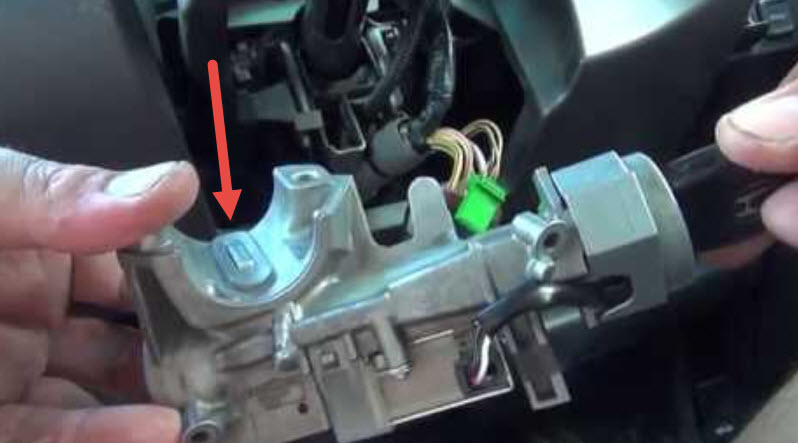

By turning the inserted key, the blocker is removed, but as the mechanism ages, this becomes difficult. The key may simply jam and the steering wheel will remain locked. The use of force will not give anything, except that the key will break, finally burying all hopes.
What to do if the ignition lock is jammed in the Audi A6 C5, Passa B5
Two situations are possible, in one of which the key is turned, but the lock does not perform one of its functions, or the key cannot even be turned.
In the first case, the larva can be taken out quite easily, it is enough to release its retainer through the hole next to the protective washer with a slot for the key in the ignition on position. With a lost or jammed key, everything is much more complicated.


Watch this video on YouTube
Removal of the larva
The larva is quite easy to remove if it is possible to rotate it with a key. If the lock is jammed, then you will have to drill the body opposite the latch and press it through the hole formed.
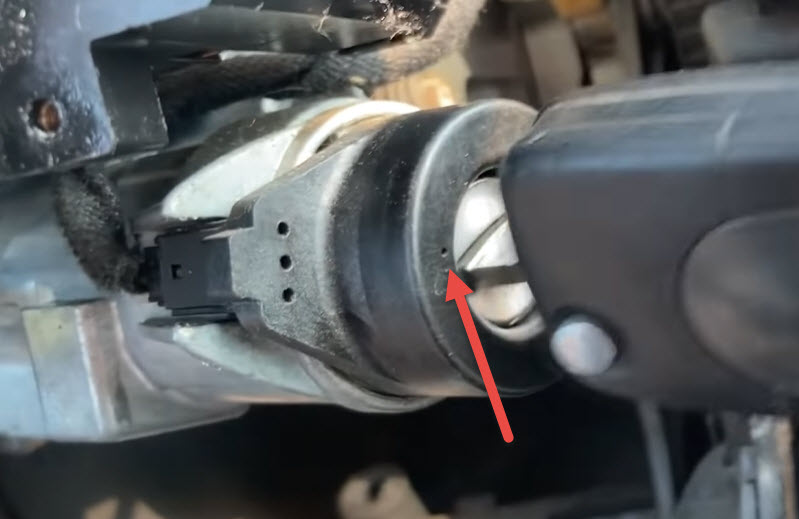

To determine exactly where to drill, you can only have a faulty body for experimental destruction.
Bulkhead code frames (secret pins)
Theoretically, it is possible to disassemble the larva, remove the pins, read conditional codes from them and order a repair kit with the same numbers.
This is a very time-consuming and diligent procedure, it is much easier to replace the lock with a new one. In addition, it is unlikely that everything will turn out clearly on the first attempt to an inexperienced repairman.


You can even refine the pins by filing. This will compensate for their wear, as well as damage to the key. The work is very delicate and requires great skill.
Output in the ignition key
The key wears out in exactly the same way as the larva, but it can be ordered quite inexpensively in a specialized workshop, where a copy will be made, taking into account the deterioration of the sample. It will be necessary to remove the larva for precise fitting and error-free operation of the lock and key.
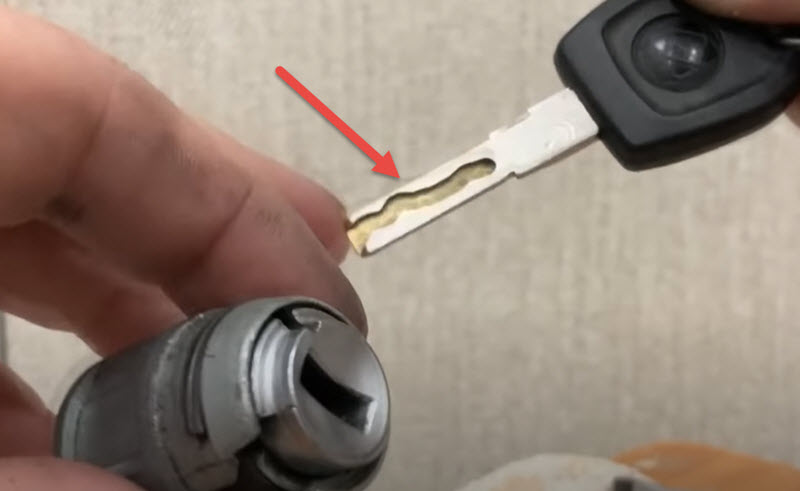

Answers to popular questions
According to the principle of operation, the locks on almost all machines are approximately the same, therefore similar questions arise.
How to lubricate the larva of the castle
It is usually argued that the most popular lubricants such as WD40 and silicone are harmful to the larvae. As for silicone, its use is really inappropriate here, but WD will effectively wash the lock from invisible contaminants and even lubricate it, although its anti-wear properties are not great.
As for the thickening of the residues, we can only say that there are almost none left there, they are relatively harmless, and if they still interfere, then a new portion of WD40 will instantly change the situation, rinse and lubricate everything.
How much does a new larva cost
A new Audi A6 larva with a case and a pair of keys from a good manufacturer will cost 3000-4000 rubles. It will be even cheaper to buy a part from disassembly, original, in “almost like new” condition.


A new original delivered from Europe is much more expensive, about 9-10 thousand rubles. But there is no need to order it, so such goods are unpopular in trade.
Does it make sense to repair or replace with a new one?
Lock repair is technically complex, time-consuming and does not guarantee quality and reliability. Therefore, the best solution would be to purchase a new part.
